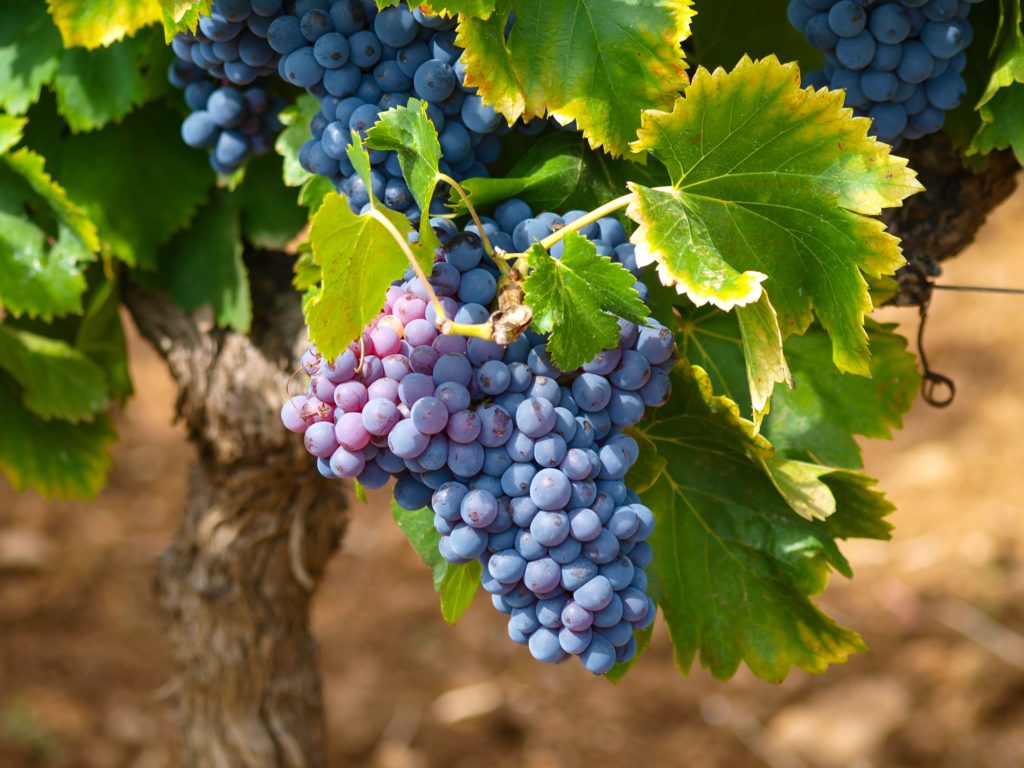
Hybrid "Zilga" - a universal grape variety. Its large sweet berries are suitable for making wine drinks, juices and various preserves. Zilga also received universal recognition for its biological characteristics - the plant is frost-resistant, practically not susceptible to disease, and keeps up very early.
The inhabitants of the northern regions prefer to grow it, since it does not require shelter for the winter and it is enough to simply look after it.
Content
Origin history
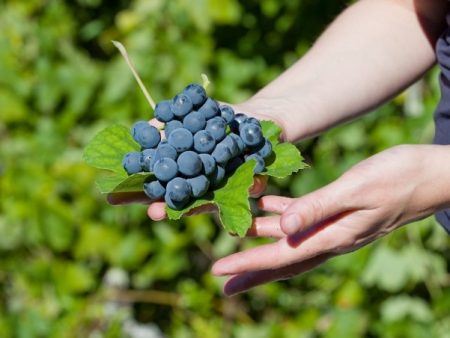
Zilga was born in 1964 thanks to the Latvian breeder P. Sukatnieks. By that time he had already bred about a hundred of bright, successful grape varieties. However, the winegrower did not stop his curious experiments, he tried to create grapes adapted to the harsh climate of northern Europe, which would satisfy all the needs of society. Zilga was created on the basis of Russian varieties "Smuglyanka", "Anniversary Novgorod" and the Latvian "Dviesta". This type of grape is able to tolerate 30-degree frosts, winters well without shelter, even in snowless periods. A new variety of vines has been widely recognized in Lithuania and Latvia, Belarus and other countries with uneven climates.
Zilga in its characteristics belongs to the group of technical varieties. That is, wine is best made from it. This feature can boast only late and late southern varieties, while Zilga refers to hybrids of early ripening.
general description
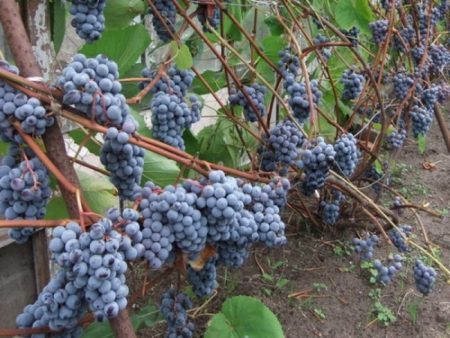
Zilga hybrid is early ripe, that is, the crop ripens in 120-130 days. The grafted bush is medium-sized, root-bearing, reaches a height of two or more meters. Shoots have good growth power. Annual lashes have time to mature before the onset of the cold season. The foliage is large, three-fingered, dark green (the color of the back side is slightly bleached). It is dense, rough.
Zilga grapes are a self-pollinated plant. Flowers have organs of both sexes. After flowering, small rounded blue berries are formed in their place, covered with a gray matte coating. The skin is thick, elastic. The pulp is jelly-like, mucous, with a few large seeds. Taste is estimated at 3.2 points. It contains a note of Isabella. The mass of the fetus is 6-7 grams. Fruits contain about 20% sugar, and their acidity does not exceed 5 g / l.
The name of the variety indicates the color of the berries. "Zilga" in Russian means "bluish."
Berries are collected in 30-35 pieces in loose clusters, of which 2-3 on each shoot. They are conical or cylindrical in shape. Brushes are voluminous and weighty. The weight of one medium bunch is 350-450 grams.
Grapes give a good yield - up to 12 kilograms of berries from the bush. Ripening occurs in late August. The pluses include the feature of berries for a long time not to crumble from the bush. They can hang on long stalks for a long time, tanning in the sun. The longer they stay on the bush, the sweeter they will be.
Diseases and Pests
A characteristic feature of the variety is its resistance to infectious diseases. Attentive care will protect against damage by fungi and viruses, as well as from the invasion of aphids and spider mites. In rainy seasons, fungal diseases such as mildew, gray rot and oidium sometimes develop. These diseases manifest themselves in powdery bloom - spores of fungi. Sick berries shrink, dry out and fall off.And the affected shoots develop poorly, mature late, therefore they become less winter-hardy.
To protect the vineyard from the disease, repeated treatment with fungicidal agents is carried out. Depending on the pathogen, drugs such as Quadris, Folpan, Strobi, Topaz, Kuprozan, Shavit, Polykhom, Acrobat and others are used.
Growing Features
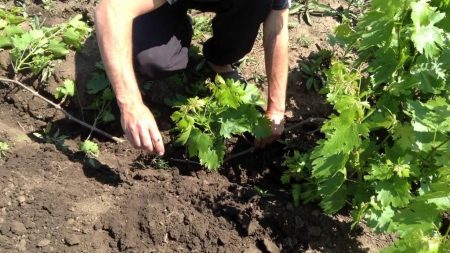
When planning a vineyard, one should take into account the biological characteristics of Zilga. He likes to grow in sunny areas with sandy or sandy loam soil with a slightly acidic reaction (the pH should be in the value of 5-5.7) Therefore, if the soil is too acidic, then liming the area will be useful. Grapes can also grow in the shade, but lack of lighting will greatly affect the quality of the fruit. You should not plant grape seedlings near the walls of houses and next to tall trees, which with their roots will oppress the grapes.
It is best to arrange a grape bush on the south side of the plot 4-5 meters from the house wall. This will provide maximum lighting and protection against cold winds.
High-quality seedlings should have a well-developed root system, smooth clean shoots with numerous eyes. Before planting, the roots are soaked in water or a growth stimulator. For better adhesion to the soil, the roots are dipped also in a clay-dung mash.
Before planting, the site is dug up and superphosphate, wood ash and humus are added. Under each seedling they dig a deep hole measuring 50 * 70 centimeters. At the bottom of the pit lay a bucket of humus and mix thoroughly in the ground. Seedlings are planted so that the bases of the annual shoots are 3-5 centimeters above the edges of the pit. As they backfill, the earth layers are compacted, spilled with warm water. If cuttings are planted, then 2 pieces are planted immediately in each pit. Care of cuttings should be more thorough, as they do not take root well. Due to the fact that Zilga is a strong-growing powerful plant, seedlings need to be planted in a distance from each other. The distance between the pits should be within a meter and a half. After planting, the grapes are once again watered and mulched, so that the moisture remains in the ground for as long as possible.
The most delicious wine is obtained if Zilgu grapes are grown on poor sandy soil.
Care for a young vineyard
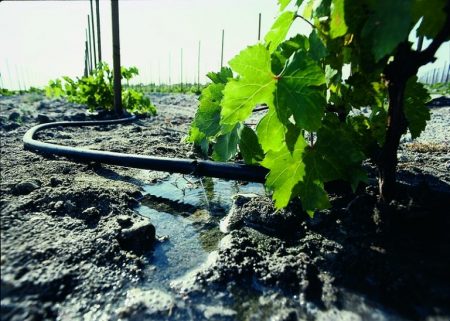
Caring for a newly planted grape seedling is reduced to systematic watering, top dressing, and loosening the soil. To build a powerful root system, grapes need a lot of water. In the first year, the plant is watered up to 15 times. The first time the grapes are watered immediately after planting. If the land is pebble, then the number of irrigations is increased to 18. Dense soil is watered less often, up to 10 times during the summer. It is especially important to pay attention to watering in early summer and when the grapes are ripening. In September, watering is reduced. It is preferable to water the vineyard along the furrows dug from two sides of the plant with a thin stream. Each young vine bush requires up to three buckets of water. The soil must be moistened to a depth of 80 centimeters. In the second summer, the plant is watered 8-9 times. In the spring months, watered once, since the earth is still sufficiently saturated with snow moisture. Autumn is also watered once. And in the summer months you need 2-3 watering. In the third year, the number of irrigations is already 6-7.
After watering, the soil is loosened, while getting rid of weeds. If the soil is poor in nutrients, then in the first year in the fall manure is added to the soil - up to 4 kilograms per square meter. With a well-fertilized soil, top dressing begins to be arranged only next year.
Although Zilga is considered a frost-resistant variety, it is recommended to shelter a young vineyard for the winter. The base of the trunk is high up with earth, sprinkled with foliage. At the end of March, grapes are opened very carefully so as not to hurt the kidneys. Then carry out the first deep loosening in order to saturate the soil with oxygen. After opening, the one-year-old grapes are pruned. At the same time, 2-3 of the best shoots are left, the rest are cut off. During autumn pruning, 2-4 developed shoots are left and they are cut by 1 meter, forming sleeves. After trimming, manure is introduced into the aisle.
Caring for fruiting grapes
As the bush grows, the vines are tied to a support. Usually the first garter is carried out from the second year of the plant's life. The best type of support for grapes is trellis. Zilga is good because it does not need to be covered for the winter, which means that it eliminates the need to remove long lignified lashes from supports. In winter, you can only podokuchit the base of the bush so that the roots do not freeze.
Pruning
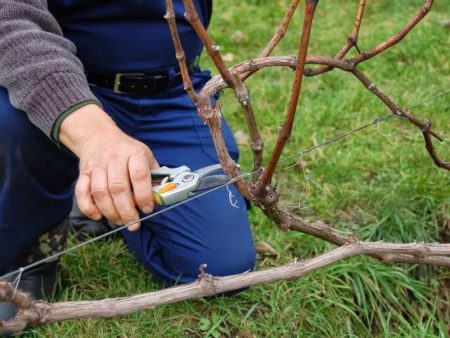
In spring, when the shoots reach 10-15 centimeters of length and inflorescences form on them, unnecessary shoots are broken out or cut out. Remove weak and spoiled branches, as well as non-bearing. Pruning is necessary to dilute the crown, so that the bush is not obscured by excessive shoots, and the sun and light freely penetrate deep into the bush. Zilga is characterized by a tendency to shoot formation. If they are not partially removed, then the vine in the lower layers may not ripen in time and will freeze in the winter. And even if the frost doesn’t spoil the plant, then the vines themselves will be intertwined, stretching into a tight ball. In this case, the yield will suffer. Cut grapes shortly, without fear of crop loss. On the contrary, the more branches are cut, the larger the clusters will form. On fruiting bushes, when pruning on the uterine sleeve, 4-5 shoots are left for fruiting and 2-4 shoots for substitution. No more than 7 buds should remain on one shoot. Four-year-old bushes of fruiting shoots should be 6, and substitute - 4.
Do not rush to cut branches damaged by frost. There are chances that the kidneys will still depart and grow.
A plant that is already harvesting requires additional fertilizer. It bears fruit better than the grapes that receive minerals and organics in a complex, including also summer top dressing. The main dose of fertilizers includes superphosphate (50 grams) and potassium chloride (6-9 grams per square), which are applied to the soil in the fall during digging. In the spring, after the liberation of the land, garden shrubs are fertilized with ammonium nitrate (30-50 grams) and ammonium sulfate (60 grams).
Potash and phosphorus fertilizers can be applied in the spring, if this was not done in the fall. At the end of spring and in the middle of summer, two top dressings are arranged:
- 10-15 days before flowering. Contribute 20 grams of ammonium nitrate (or 30 grams of ammonium sulfate), 25 grams of superphosphate and 4 grams of potassium chloride per square meter.
- 20 days after flowering. Plants are fed with superphosphate (25 grams), potassium chloride (3-4 grams).
Organics are added every 2-3 years. In this case, use rotted manure or compost in the amount of 5-6 kilograms per square.
Advantages and disadvantages of the variety
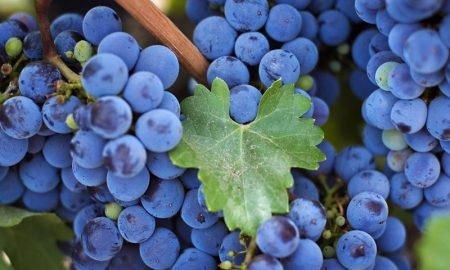
Latvian grapes are good on all sides. It is extremely undemanding to growing conditions, rarely sick and tolerates Russian winters well. Every year he shows a good yield. And bisexual flowers do not need extraneous pollinators, which makes the hybrid even more attractive in terms of cultivation. The plant has fast growth power, that is, in a couple of years you can get a fully mature, competitive vineyard. Zilga can be grown as a root plant, as well as grafted to absolutely any rootstock - it easily takes root and grows quickly this year. Surprisingly, this variety is almost not touched by wasps, so the crop at the time of cutting is almost in 100% of cases has a presentable appearance.And if you let him hang a little more in the sun, you can get natural raisins.
To a few shortcomings most often include too dense skin and large grains inside.
Reviews
Zilga hybrid has not yet been entered in the State Register, but this does not prevent it from being one of the most popular varieties of our time. Beginning wine growers begin to comprehend the basics of the Zilga grape. This is no coincidence, because he takes root well in any land and in any climate. It does not require frequent top dressing and sophisticated agricultural practices. Care is also simplified by the fact that for the winter vines do not need to be removed from the trellis. Although Zilga is intended for making wine, this does not mean that it cannot be consumed fresh or made from stewed fruit and juices. On the contrary, the nutmeg taste makes any culinary creation unusually delicate and fragrant.
Conclusion
Zilgu can be attributed to traditional grape varieties. He does not give large clusters, and the taste of the fruit is rather mediocre. However, this hybrid is not inferior in popularity to many southern varieties. The thing is that even with unobtrusive care, lack of shelter for the winter, in bad weather conditions, this grape is still able to regularly produce the desired grape brushes.




 Non-covering winter-hardy grape varieties for Moscow region
Non-covering winter-hardy grape varieties for Moscow region How to keep the vine in winter
How to keep the vine in winter When can I transfer grapes to another place in the fall
When can I transfer grapes to another place in the fall How to cover and prepare grapes for the winter in the suburbs
How to cover and prepare grapes for the winter in the suburbs